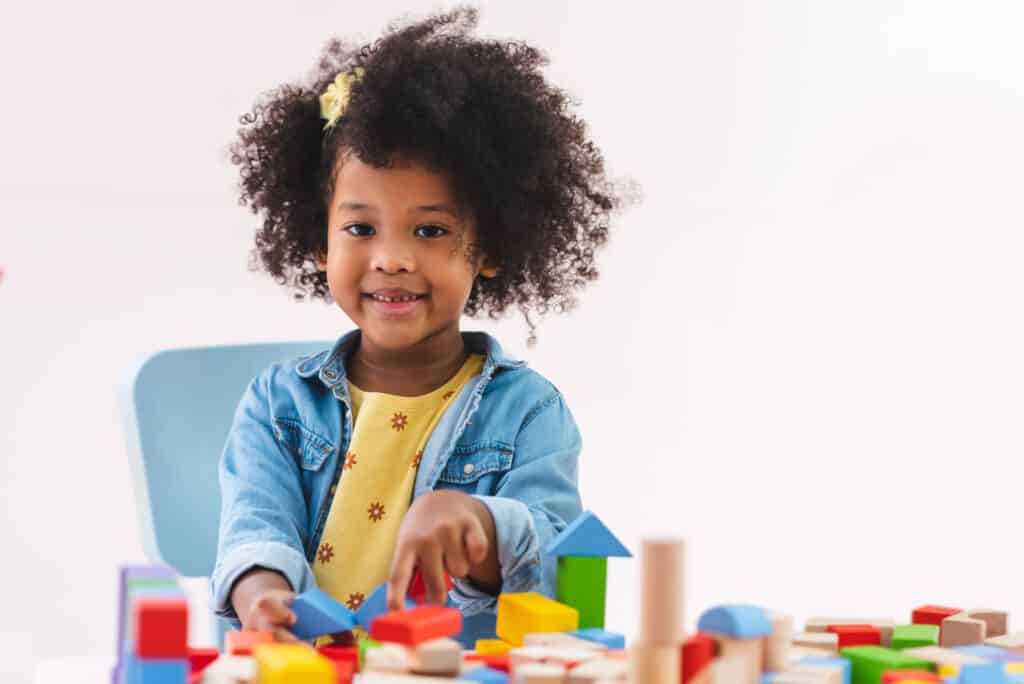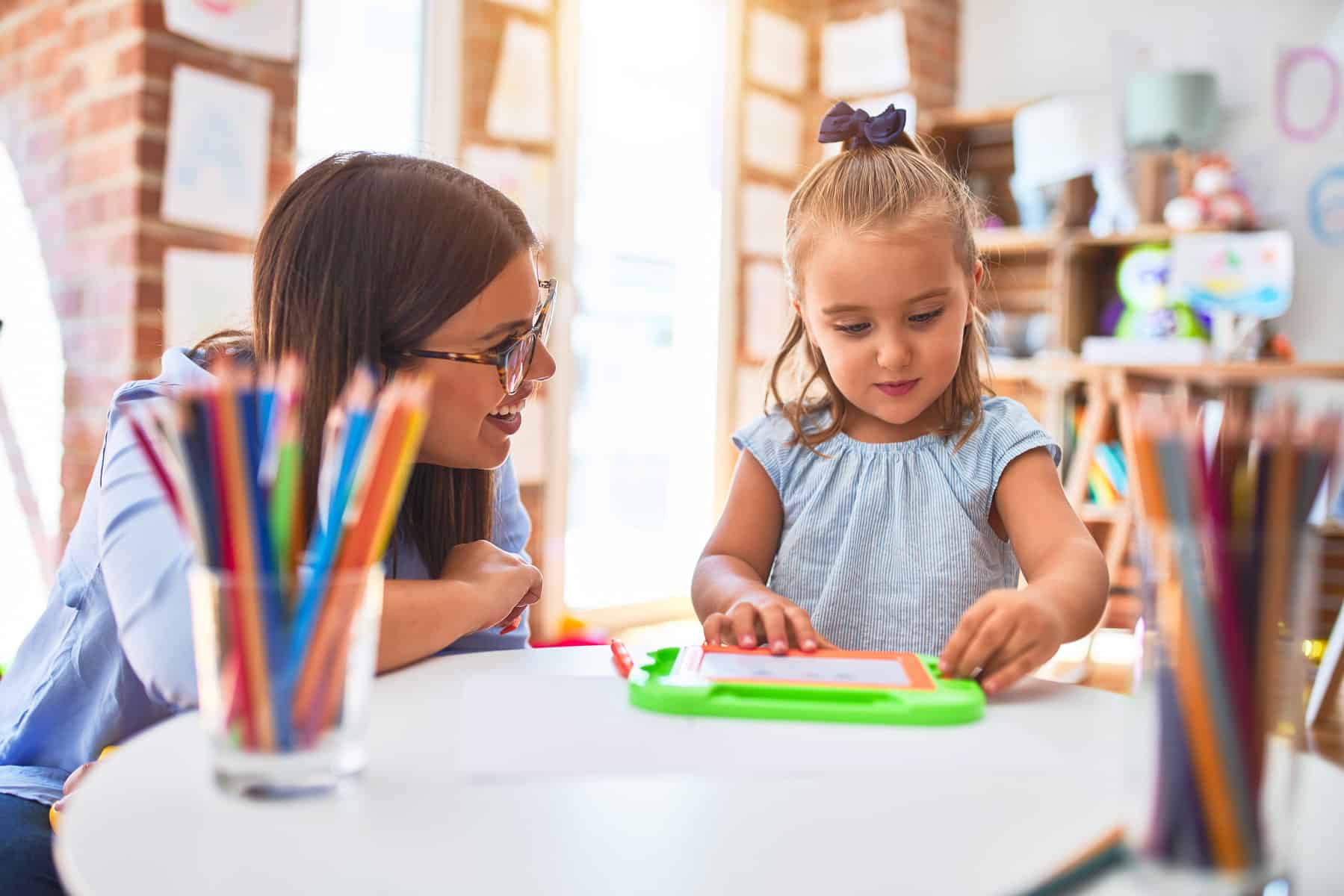Miacademy’s Online Kindergarten Homeschool Curriculum
Did you know that “kindergarten” is German for “children’s garden”? Friedrich Froebel, the German educator who founded the concepts in the original kindergarten, invented this word to symbolize his vision for early child education. He believed that children are like flowers in a garden: They are all varied, have different needs, and are all unique within the community of their peers.
Kindergarten is a time when young children learn important skills, get excited about learning, and have fun! Even though kindergarten attendance isn’t a requirement in every state, there are many clear benefits of kindergarten. Homeschooling in kindergarten is a great way for your child to start learning more about themselves and the world around them. We’ll provide everything you need to choose the best kindergarten curriculum for your homeschool, all in one place.
How to Homeschool a Kindergartener
We’ll be the first to admit that it can be intimidating to start homeschooling! Many parents worry that they aren’t doing “enough” or that their child isn’t ready to sit and learn. Other parents may try to recreate “school at home,” which can be helpful for some children if they transition to public school, but it may not always be the right fit. In practice, focusing on your kindergartener and their natural curiosity will be the best guide.
A typical kindergarten homeschool schedule will vary depending on your family and your child. Ideally, your child should play a role in constructing their schedule. For example, they may like reading a book after lunch, and so they may prefer to save language arts instruction for the afternoon.
For homeschool kindergarten, between one to three hours a day of instruction is more than enough. Your daily homeschool schedule may look like:
- Morning chores and routines
- Desk or table work
- Recess and snacktime
- Exploration and discovery-based learning
- Lunch
- Quiet or nap time
Each homeschool day will probably look a little different, depending on your student’s needs and their learning goals. Some children might need to nap, while others may benefit just from some quiet or down time. Maybe your child thrives off of spontaneous field trips, or they prefer a predictable routine. One great aspect of home education is that you can adjust it to fit your schedule and your child’s needs!
How to Choose The Best Kindergarten Homeschool Curriculum
If you’re new to homeschooling, choosing the best homeschool curriculum is no small task! You should choose a curriculum that allows your kindergartener to grow as a learner. A kindergarten curriculum should be project-based with hands-on activities to stimulate interest. After all, learning should be fun!
Kindergarteners need concrete learning opportunities and examples to connect with the world around them. Look for a curriculum that combines logically organized material with plenty of examples, practice learning activities, and extension opportunities. The best kindergarten homeschool curriculum keeps the developmental needs of young learners in mind.
At Miacademy, our early childhood educators and subject-matter experts design our kindergarten homeschool curriculum to meet the needs of many learners. We aim to support the learning needs of all children while making homeschooling easier on parents, too!

What to Include in Your Kindergarten Curriculum
As always, you should check the legal requirements for your state. Some states do not require kindergarten, while others not only require it, but they also have a list of subjects that students must learn. A comprehensive kindergarten curriculum should guide your child to success in:
Math
- Identifying and writing numbers to 20
- Counting with one-to-one correspondence
- Understanding the concepts of addition and subtraction
- Identifying shapes and colors
- Beginning to organize information, like grouping objects by size
Language Arts
- Experiencing concepts of print
- Understanding basic concepts of literacy
- Learning letter sounds and letter names
- Identifying rhyming words
- Reading short words
- Writing letters and using spelling approximations
Science
- Learning how to observe
- Understanding how to stay safe while playing and learning
- Understanding what a scientist does
- Engaging with the world in a hands-on way
Social Studies
- Days of the week
- Months of the year
- Community helpers
- Words about feelings
- Parks and neighborhoods
Other Skills for Kindergarteners to Develop
Kindergarteners need a program that develops their reading and math skills and provides personal growth opportunities. The curriculum you choose should help your child to develop social skills, increase their attention span, and practice following directions.
A homeschool kindergarten curriculum should also integrate topics like:
Social, Behavioral, and Cognitive Skills
- Following two- and three-step directions
- Following rules and routines
- Cooperating with others
- Holding and manipulating information
- Expressing their feelings
- Regulating their emotions
- Persisting at difficult tasks
- Thinking of solutions to conflict
Life Skills
- Tying their shoes
- Getting dressed independently
- Practicing good hygiene
- Practicing safety habits
- Performing household tasks like cleaning up and getting a snack
Miacademy’s Kindergarten Homeschool Curriculum
Our homeschool curriculum for kindergarten engages students with fun, wholesome lessons that get children excited about learning. Our drag-and-drop games and self-paced practice opportunities allow children to have fun while also reinforcing their skills. We believe in developing a strong foundation for learning, so your child can repeat and review lessons as needed.
Not only do we focus on academics in our core courses, but we also value social and emotional growth. With our elective courses in art, music, life skills, foreign languages, and biblical studies, your kindergartener can follow a curriculum that interests and inspires them. In fact, all of our core courses are designed with the needs of the whole child in mind.
We also believe that students learn best when they feel both supported and challenged. Our platform allows you to completely customize your child’s curriculum to align with their interests and learning needs.
We offer tons of lessons, including:
- Listen and Rhyme
- Consonants: B, C, D, F, G
- Vowels
- All About Stories
- Shapes and Counting
- Fact Families: 1 to 5
- Tell Me About: Turtles
- Let’s Take a Journey: Tanzania
- Reading a Map
- Safety: Pools and Lakes
The journey to home learning can seem daunting at first. Finding a curriculum that helps you with grading, lesson planning, and more can help you focus on your child’s needs. If you’re curious to learn more about using Miacademy for your child’s kindergarten year, feel free to chat with one of our helpful customer service representatives! They’ll be happy to help you with any questions you may have.
Updated 01/31/2024
